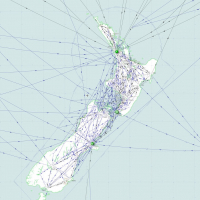Public Access to My KiwiSDR2
I'm standing outside waiting for the shop to open with my sleeping bag and tent pondering a question that now comes to mind after reading some of the posts on this forum.
Particularly is the access users may or may not have to my new KiwiSDR2. In an earlier setup I had a DDNS service manage my domain name to IP address and port forwarded 8073 to my original KiwiSDR. With a new ISP and newer router technology I have set up a DDNS service to test the water again and have been trying to access an RPi on my network from outside my network. It looks like this is a set up that is not going to work, am I correct that this is due to CGNAT technology?
If so what options are there to access my receiver (when I get one) from the internet? Sure I can phone home and ask for the IP address but that isn't really a solution. Does anyone see this as a problem?

Comments
If your ISP is using CGNAT you won't be able to obtain a public IP address, and phoning home will not help.
A Reverse Proxy is one way around the issue if it is CGNAT, but are you sure this is the actual problem and not something else ?
Are you using 4/5G or similar router ?
If you are using something like NoIP to provide the DDNS service, what does their dashboard tell you ?
Regards,
Martin
Hi Martin
My ISP supplied router is a Netgear Orbi via fibre.
The NoIP dashboard shows an IP of 161.29.xxx.xxx while my router shows 100.71.xxx.xxx
I have an RPi with Apache2 web server and I have port forwarded port 80 to this and if I browse to the router IP address I can connect to the web server no problems. If I browse to the NoIP DDNS domain name or the NoIP IP address it just times out.
100.71.x.x is CGNAT, you can only access hosts behind that via reverse proxy.
I rented a vServer with a public IP address for that purpose.
Speak with your ISP to determine what their policy is.
This is a common problem faced by folks with home security systems, so they will most probably have some form of workaround.
However, it may involve paying an extra fee to provide a 'business' connection or fixed IP address, and watch out for usage charges and / or other restrictions.
Alternatively, a reverse proxy, or other 3rd party solution may be better.
You will have to judge which is likely to be the most reliable and cost-effective.
Regards,
Martin
@HB9TMC Thanks for that, I have found my ISP is indeed using CGNAT so I'll give them a call to see what they can do.